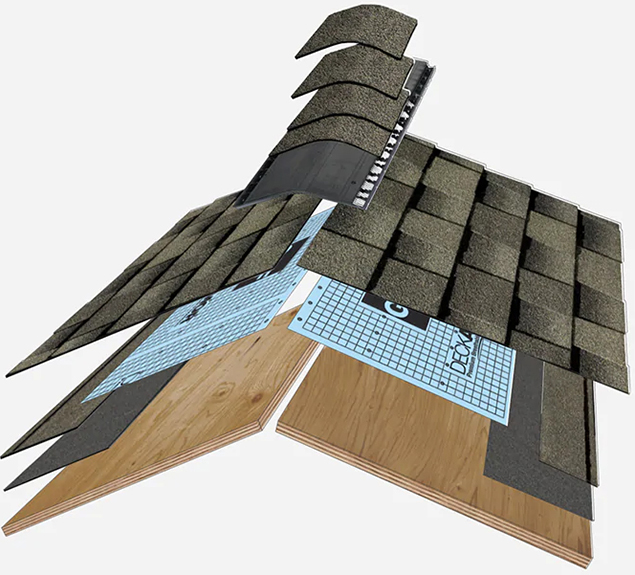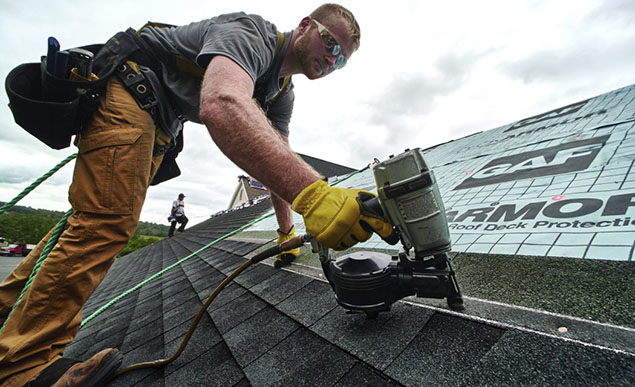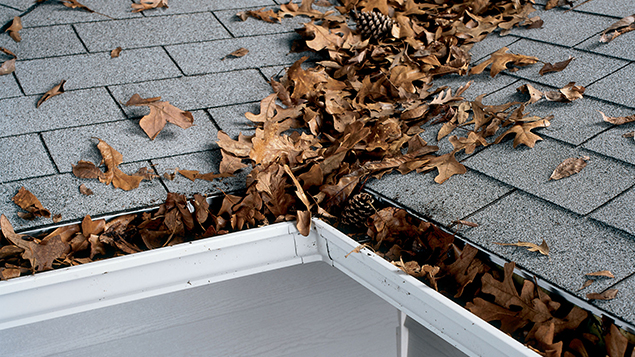The Fire Resistance of Different Kinds of Roofing Materials
What’s a Fire-Resistant Roof?

Image credit: GAF.com
Fire resistant roofing refers to the material covering the roof, such as shingles or metal, that have been tested to meet UL 790 criteria for fire resistance when exposed to a simulated fire source originating from outside a building. Based on the test results, the covering will be rated either Class A, B or C, with Class A providing the most protection from fire.
Fire resistant does not mean fireproof. There are no 100% fireproof materials. Given a certain amount of time and heat, anything can burn eventually. When roofing materials claim to be fireproof, check the UL classification which should be clearly labeled on product packaging.
If you’re in the market for a new roof, price may be your top concern. But if you can get an affordable roof that’s also fire resistant, why not? Especially if you live in the top three states prone to residential fires: Texas, California, and New York ,according to the U.S. Fire Administration.
Some roofs use additional materials between the roof covering and sheathing to attain a Class A fire rating. Examples of Class A fire rating materials include aluminum, some fire-retardant wood shake products, and recycled plastic and rubber products.
What Ratings are Required by Local Building Codes?
Depending on where you live, there may be legal requirements for your new or replacement roof. These requirements may depend on the building’s construction, location, or history of fire incidents. The International Residential Code (IRC) provides detailed guidance.
Highest Rated Fire-Resistant Roofing Materials

Image credit: GAF.com
Since the roof is a structure’s most vulnerable area, a fire-resistant roof is particularly important in areas with a high risk of fire. Your roofing contractor should guide you through the process of selecting the top layers and underlayments necessary to meet your specifications. These materials are all Class A-rated:
Asphalt Shingles. Class A asphalt shingles can withstand a fire burning through the wooden structural components for up to two hours. Because asphalt shingles are relatively inexpensive, they are the most common roofing material – especially in areas where fire isn’t an ever-present danger. In fire-prone areas, other fire-resistant materials are superior.
Concrete and Clay Tiles. Often used for Spanish or Southwestern architecture, concrete or clay tiles are a fire-resistant and durable roofing material. However, due to its weight, a qualified contractor will need to evaluate the load-bearing capability of the existing structure prior to installation.
Slate. Slate is another heavy roofing material that is nearly indestructible. It is a more expensive choice for roofing.
Metal. For a lighter option in fire-resistant roofing materials, there is metal roofing. Metal roofs come in a variety of different alloys, colors, and styles. It can even be fashioned to look like wood or stone for a unique look.
Additional Fire Safety Tips

Image credit: harryhelmet.com
Additional safety tips include keeping flammable debris such as leaves off of your roof. Also, you should replace any missing or damaged shingles to keep embers from getting into your home in the event of a nearby fire. Lastly, have a professional RoofCrafter technician inspect your roof regularly.
Safety is RoofCrafters’ Top Priority
While we’re committed to providing the highest quality materials and installation techniques, safety is first. You can rely on RoofCrafters’ extensive experience to ensure your complete roofing system performs properly and up to code. Get started with a project planner today!
